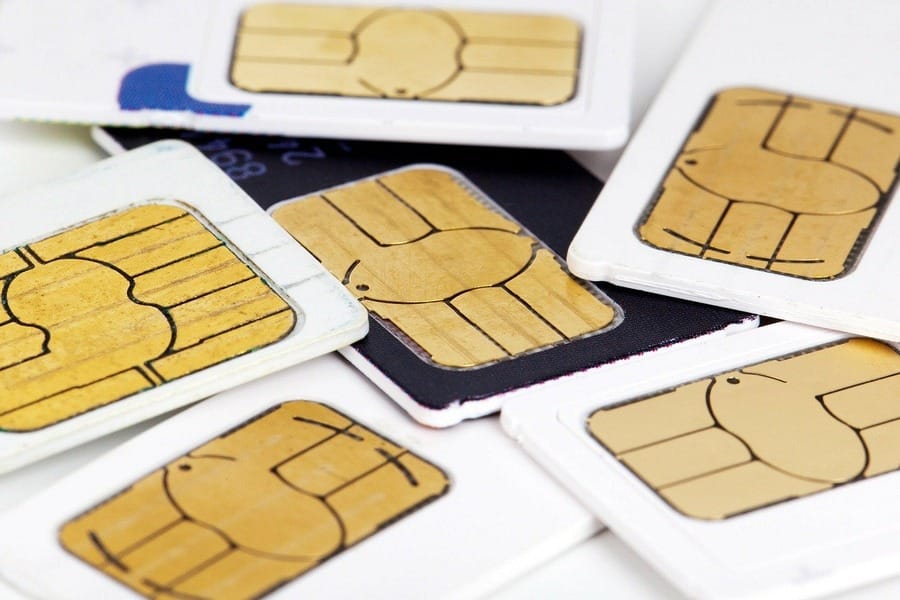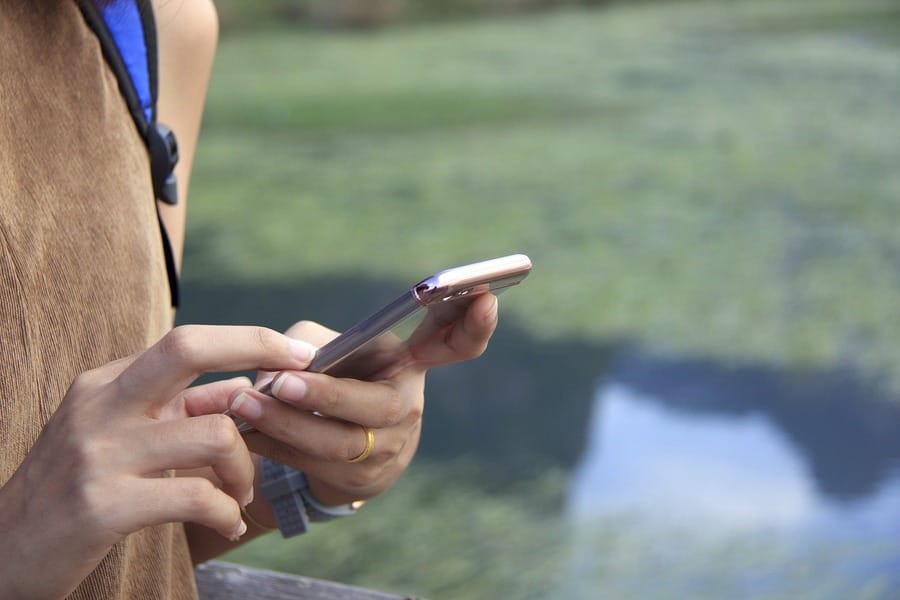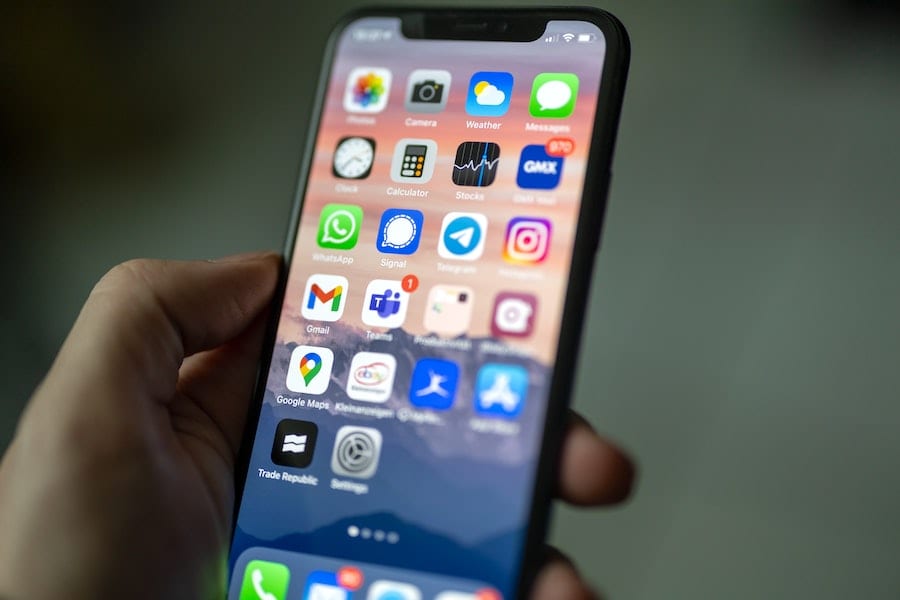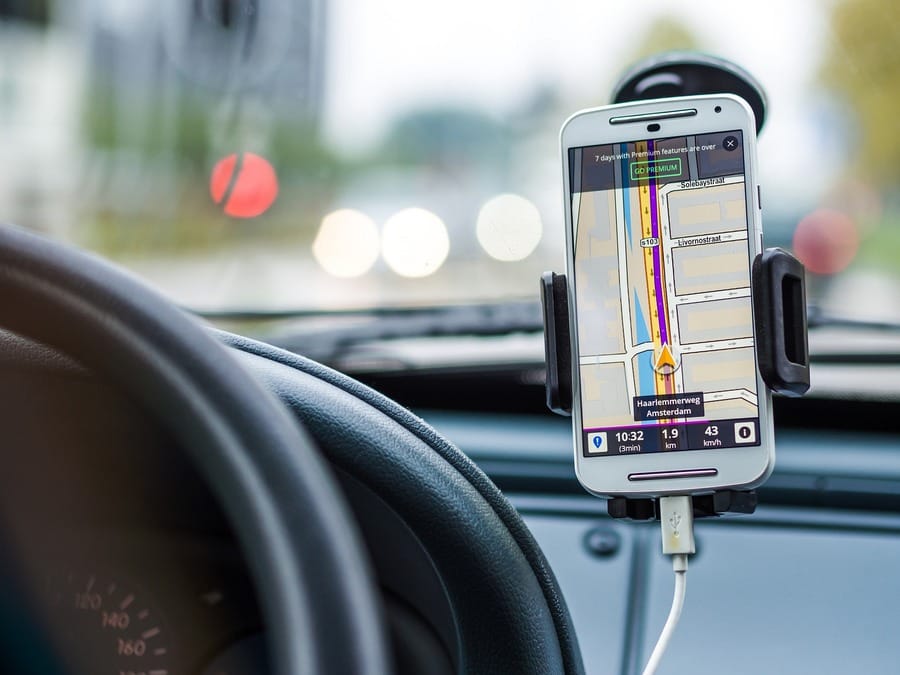I use my phone for just about everything related to travel – booking a rideshare, comparing flight prices, flight check-ins, finding accommodation, navigating a new city, deciding on where to eat.
The list is endless.
When I started long-term travel back in 2012, I picked up a local SIM card in almost every country I visited. It was a pain to find a vendor, compare carriers and plans, and make payments… sometimes in a foreign language (or even using hand gestures). But there was no other option.
Now there is.

eSIM technology promises to do away with the headaches of using your smartphone for international travel, amongst other things. I’m going to cover everything you need to know about eSIMs so you can decide if it’s a good fit for you.
Let’s jump in.
Discount: Save 5% on Holafly's eSIMs with our exclusive code "TRAVELWITHBENDER".
What is an eSIM?
Ok, first things first. A physical SIM card is the familiar fingernail-sized piece of plastic, clad with gold on one side, that inserts into your smartphone to allow a carrier to identify who you are. That little bit of magic enables the delivery of voice, text, and data to your handset.
An eSIM is a software-based alternative to the original physical card. It stands for “Embedded Subscriber Identity Module”. There’s no more need to poke your phone with a semi-straightened paperclip to remove that fiddly SIM card.
Rejoice, my friend!
Ok, so far so good.

Is My Phone Compatible?
Before you get carried away planning a no-more-SIM-card celebration party, you need to check if your phone, tablet, laptop or even smartwatch is compatible with eSIM technology.
The Google Pixel 2, released in November 2017, was the first mainstream handset with eSIM support. Since then, Apple followed the lead with the iPhone XS, and Samsung with the Galaxy S20. The list of devices that support eSIM is growing regularly, so check out this up-to-date list to see if your device is ready.
Most compatible handsets still haven’t ditched the physical SIM tray to make it easier for users and carriers to transition to the next step in mobile tech. You can have the best of both worlds!
Before you go around switching SIM cards – virtual or otherwise – you’ll also need to ensure your device is unlocked. If you bought a phone from a carrier at a very small (or no) upfront cost, often they will lock the phone to prevent you from jumping ship. If in doubt, give your home carrier a call. Or if you don’t want to wait on hold for 48 million years, just ask a friend who’s on a different network to try their SIM card.
Here are alternative methods for checking your locked status… in case you don’t have any patience… or friends.
Oh, if your current phone doesn’t support eSIM, now’s a good time to go phone shopping. *wink wink*

Benefits of an International eSIM for Travel
I have to say upfront that eSIMs are just as useful at home as they are abroad, but for the purpose of this article, I’m focusing on international travel. If you’re curious about which carriers support eSIMs, here’s a handy list from Apple.
Now to the good stuff. What makes these virtual thingos so cool?
Instant delivery - no waiting for a physical SIM card or hotspot device in the mail, and zero shipping cost.
Fast data speeds - you’re not a second-class citizen using an eSIM. Use all the same top-shelf 4G and 5G networks when you travel abroad. Naturally, data speeds will vary based on network coverage, but that’s the same anywhere in the world.
Keep your original physical SIM card - it might be useful for roaming calls and/or texts, and you can switch back to it when you get home without reaching for that poor bent-out-of-shape paperclip.
Peace of mind - possibly the most important aspect when travelling… now focus on enjoying your vacation rather than hunting for a random SIM card seller at the airport when you land.
Easy top-up - no need to go to a provider’s physical store to add more credit. Just tap a few buttons on the eSIM provider’s website or app.
Easy switch - jump between service providers in just seconds, without removing or adding a physical SIM card.
Only pay for what you need - most international eSIM providers offer shorter periods like 1 week, 2 weeks, or a month. Much better than paying for a local SIM card upfront for a whole month when you only need a portion of that.
No bill shocks - I’m sure you’ve heard the horrifying stories. eSIM prepaid data plans give you control over how much you spend so there are no nasty surprises when you get home.
Improved security - no need to rely on risky public wifi networks at airports, train stations, and restaurants. These are easy targets for hackers.
Keep your WhatsApp number - you don’t have to worry about missing important text messages. Other IM apps like Telegram, iMessage, and Facebook Messenger work perfectly fine too on eSIMs as they just use the Internet.
No losing SIM cards - yes, those fiddly little pieces of plastic can get dropped or misplaced easily when doing a switch… because, uh… a friend told me. Yeah.

Limitations of an International eSIM
There’s no such thing as a silver bullet. And while eSIM technology is pretty super cool, it’s still relatively young compared to established alternatives.
Data only - some eSIM providers do not include a local phone number on data-only plans. That may or may not be important to you.
Take your turn - most compatible handsets allow you to download more than 1 eSIM, but only 1 can be used at a time. Apple fans will be happy to know the iPhone 13 supports 2 active eSIMs at the same time. Woot!
Easy does it - data limits might be lower than what you’re used to at home, so use your data carefully… sip it like a fine wine, don’t chug.

Is an International eSIM for you?
Now it’s time to ask yourself some tough questions. Try to visualise yourself having a wonderful time on vacation and think about how often you’ll use your phone, and what you’ll use it for.
Everyone’s different – light users might just check their emails and Facebook feed once a day, whereas heavy users may stream movies while making a group video call.
How often do you use your phone?
The type of services/apps do you use will affect the amount of data used. Here’s a handy calculator for working out how much data is used for tasks like email, web browsing, Facebook, YouTube, Skype, Spotify and more.
How long is your trip?
There’s no point getting an international eSIM plan that is longer than your vacation. If your trip is over 1-2 months, and you don’t really need a home number (for calls/text), then an international eSIM might be overkill.
How many countries are you visiting?
Is this slow or fast travel? The more countries you cover, the more valuable an international eSIM will become. It really shines on cruises, road trips, or tours across multiple countries. Some providers offer country-specific plans (eg. USA) or regional plans (eg. Europe).
Tip: Check out my articles for tips on choosing an eSIM in Europe, UK, and USA.
Does it support tethering?
You’ll probably want all your devices to connect to the Internet - tablet, laptop, friends/family phones – with your handset as the hotspot. Tethering makes it easy to share just 1 eSIM and stretch your dollar further.
How much is your time worth?
An international eSIM plan usually costs a little more than buying a local SIM card… but it’s muuuuch more convenient. And let’s be honest, you don’t have enough time on your vacation as it is. So, let’s not waste it.

How to Choose an International eSIM Plan and Get Started
Once you’ve answered the above questions, it’s time to compare eSIM providers and plans.
1) Check if voice/text is included (if that matters to you), and most importantly, how much data allowance is included. If the provider offers additional data, review the upgrade prices as it’s better to find out now than later.
2) Not all telco networks are the same. So, check your eSIM provider’s website if they clarify which networks are used in the countries you’re visiting.
3) Look for customer reviews on Trustpilot – with emphasis on network coverage and customer support (just in case you need a little help – you never know). Live chat on their website is a good sign.
If you need a recommendation, I can suggest Holafly. Their prices are quite reasonable and it’s super easy to get up and running.
Update June 2022: Holafly now supports plans with unlimited data (industry first!) and eSIM top-ups in all countries. Physical SIMs can also be topped up in dozens of popular destinations like Australia, South Africa, Turkey, Hong Kong, and Spain. As with most unlimited eSIMs, Holfly no longer supports tethering in most locations.
Now that you’ve picked a provider, it’s time to buy. Either use the provider’s website or mobile app to complete your purchase. An Internet connection is required to do these steps, so I recommend setting up your eSIM before leaving home.
1) Once you’ve completed the checkout process and made payment, you’ll receive a QR code on the provider’s website, app or in a confirmation email.
2) Update your smartphone settings:
- iOS: Settings > Cellular/mobile data > Data plans
- Android: Settings > Network & Internet > Mobile Network > Carrier > Add Carrier
Scan the QR code or follow the next steps in your provider’s app to instantly download your eSIM. Some eSIMs will ask you to enter a confirmation code (which is provided to you at the same time as the QR code). Here are more detailed steps for iPhone, Samsung, Google Pixel, and Huawei handsets in case you get stuck.
Essential eSIM Tips
The devil is in the details. So, here are the most important things you should know about eSIMs to ensure a silky smooth trip.
- Your “data plan” expires at some point, but your eSIM does not so don’t delete it. You might want to reuse it in the future. If you delete the purchased data plan before it has finished, it simply goes away, so don’t do that.
- You may be asked for passport details when purchasing an eSIM as certain countries have KYC (Know Your Customer) regulations when it comes to telecommunications.
- Plan ahead, don’t leave it to the last minute. While the eSIM delivery can be instantaneous, you don’t want to start your research the night before you fly. Have everything you need lined up before you travel.
- Find out how to check your data balance. This process will vary between providers and devices. Most of the time you can find your data usage settings on your phone.
- Decide which SIM is your primary. Find out if your home SIM offers cheap or free roaming phone calls and expensive data. In that case, a data-only international eSIM will do the job.
- If in doubt, turn roaming off, just in case you’re using your physical SIM and home carrier without realising. No bill shock, please!
- Keep an eye on your data usage each day - if you’re running out of data, pause your plan or top up.
- Save data by disabling automatic app updates on your phone and laptop. This is relevant even if updates are enabled for wifi only - a tethered connection with a friend or family member will be treated as “wifi”.
The Bottom Line
Now you should be up to speed with the basics of international eSIMs. I’m a big fan of ditching the annoying plastic physical SIMs, and gaining the increased freedom and flexibility of switching providers in seconds.
As long as you keep a close eye on your data usage, in the same way you watch what you eat (sorry, no ice cream for breakfast), then an eSIM will make your next international vacation a breeze.
And if your handset isn’t up to speed yet, now’s a good time to start thinking about an upgrade… as if you needed an excuse.
Bon voyage!
Discount: Save 5% on Holafly's eSIMs with our exclusive code "TRAVELWITHBENDER".












Reader Comments...
"I respond to every comment by direct private email. I look forward to your feedback" - Josh BenderTHANKS FOR SHARING
amazing article
This information is the most important to me so,thank you so much for the giving this information.
Thankyou....
Soo much useful information.
cool blog
I love reading your blog. They are very informative looking forward to read more from you
nice article amazing most important to me so,thank you so much for the giving this information.
Write Your Comment
Please DO NOT include links, URLs or HTML in your comments - they will be automated deleted and you will waste your time.